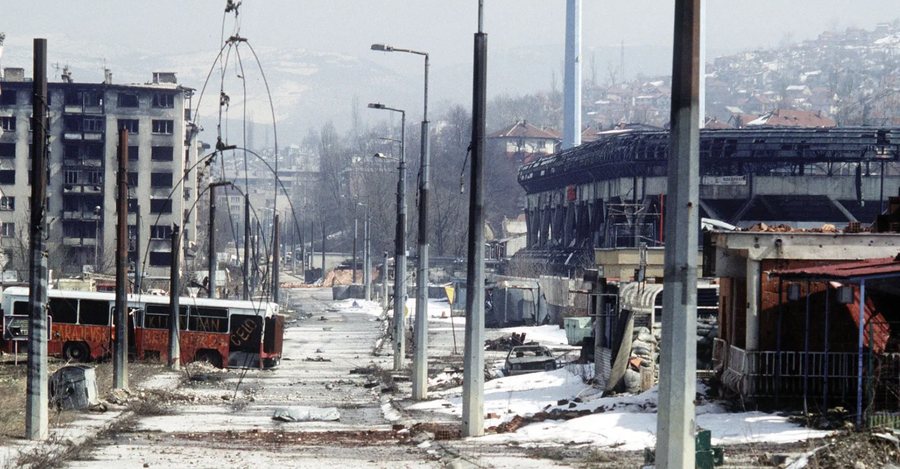
By Enver Robelli
The war in Bosnia and Herzegovina began 33 years ago. The battle of Serbian nationalists to destroy this state continues this spring.
On March 25, 1991, two presidents met in Karađorđević, Vojvodina. Slobodan Milošević on behalf of Serbia, Franjo Tuđman on behalf of Croatia. In the Karađorđević nature reserve there is a state residence, which was once used by the king of Yugoslavia, Aleksandar Karađorđević, then, with the victory of the partisans against Nazism, the beauty of the area around Karađorđević was also discovered by Josip Broz Tito.
There he received statesmen, delegations and ambassadors and, often, after long conversations and lunches, the Yugoslav marshal would take his hunting rifle and go out into the nearby forests.
Where Tito had shot a wolf, fox or wild goat, Milosevic and Tudjman allegedly talked about the future of Bosnia-Herzegovina, or rather about its division. The meeting took place in private, no one else was present. Stipe Mesic, once a close associate of Tudjman, later his opponent because of his policies towards Bosnia, said that in Karađorđevë there was talk of the division of Bosnia. Even the last prime minister of Yugoslavia, Ante Marković, a Croat by nationality, claimed the same thing. Whether there was a detailed agreement or not on the division of Bosnia is not important, because the war in this republic really broke out.
2.
By 1991, Slovenia and Croatia had declared independence. Since there was no large Serbian minority in Slovenia that could be armed and instrumentalized to fight against the government in Ljubljana, the Yugoslav army - dominated by Belgrade and in the service of Serbian hegemony - was withdrawn from the northernmost Yugoslav republic and placed at the service of the rebellious Serbian minority in Croatia. The goal was to realize the project of a Greater Serbia. To achieve this, Bosnia-Herzegovina had to be conquered.
On 9 November 1991, Bosnian Serbs voted in a referendum to remain part of Yugoslavia. According to their leaders, “90 percent” of Serbs took part in the referendum. In the following months, the situation became increasingly tense. For Bosniaks and Croats, who made up the majority of Bosnia’s population, there was no place for them in a Yugoslavia dominated by Slobodan Milošević and his Serbian minions in Bosnia. Therefore, on 29 February and 1 March 1992, a referendum on the independence of Bosnia and Herzegovina was held, which was boycotted by the Serbs. About 94 percent of those who took part in the vote (Muslims and Croats), or about 62 percent of all voters, voted in favor of independence for their republic. On 3 March, Bosnia declared independence, which was recognized by the member states of the European Union on 6 April. The United States of America accepted Bosnian citizenship a day later.
3.
After Serbian forces occupied Zvornik and Bijeljina, two towns near the Serbian border (and killed several Albanians there), in early April Serbian armed units surrounded Sarajevo. On April 5, the day before the European Union recognized Bosnia’s independence, over 100,000 people of all ethnicities demonstrated peacefully in Sarajevo. Few expected that war would break out across the country. This optimism ended when Serbian snipers opened fire and killed a Muslim girl, Suada Dilberović, and a Croat, Olga Sučić, on a bridge near Sarajevo’s old town.
A few weeks later, the Yugoslav army withdrew from Bosnia. At least that was what Belgrade's propaganda claimed, because the facts showed something completely different: some 60,000 Bosnian Serb soldiers and officers took off their Yugoslav People's Army (JNA) uniforms and put on the uniforms of the Bosnian Serb army, which was commanded by Ratko Mladic, an officer who had made a career in the JNA - from Kumanovo to Pristina and on to Knin in Croatia, before coming to Bosnia, where he was born in 1942. The JNA left almost all its weapons and ammunition to the armed Bosnian Serbs. There were still 35,000 armed Serbs at the time. According to a report presented to the UN Security Council by Egyptian-American lawyer Cherif Bassiouni, at least 56 Serbian paramilitary groups operated in Bosnia between 1991 and 1993.
The city of Sarajevo was kept under siege for 1,425 days - until February 29, 1996, when the government officially declared the end of the state of siege.
1,425 days of terror against the civilian population.
1,425 days of indescribable suffering.
1,425 days during which over 1,500 children were killed.
1,425 days during which over 10,000 adults were killed.
An average of 329 grenades fell on the city every day.
On July 22, 1993, Sarajevo was hit with 3,777 shells.
Over 100,000 houses and apartments were damaged or completely destroyed.
On February 5, 1994, a grenade hit a crowd of people in the Markale town bazaar. 68 people were killed.
On August 25, 1992, an attack on the National and University Library (formerly the City Hall) reduced nearly 1.5 million books to ashes. American historian András Riedlmayer describes the crime as the largest case of deliberate book burning in modern history.
33 years have passed since the outbreak of the war in Bosnia, or rather the beginning of the Serbian aggression. The battle of Serbian nationalists to destroy this state continues this spring.
(A2 Televizion)











